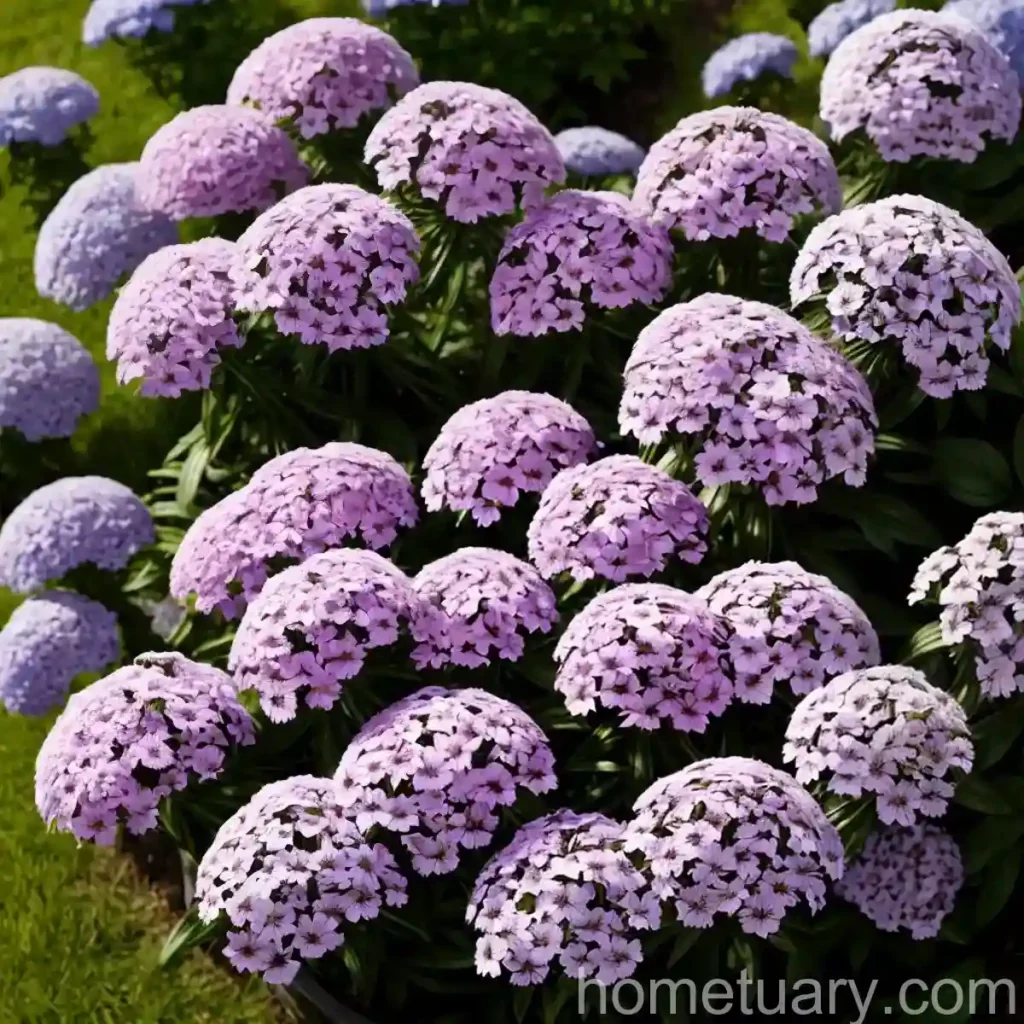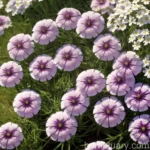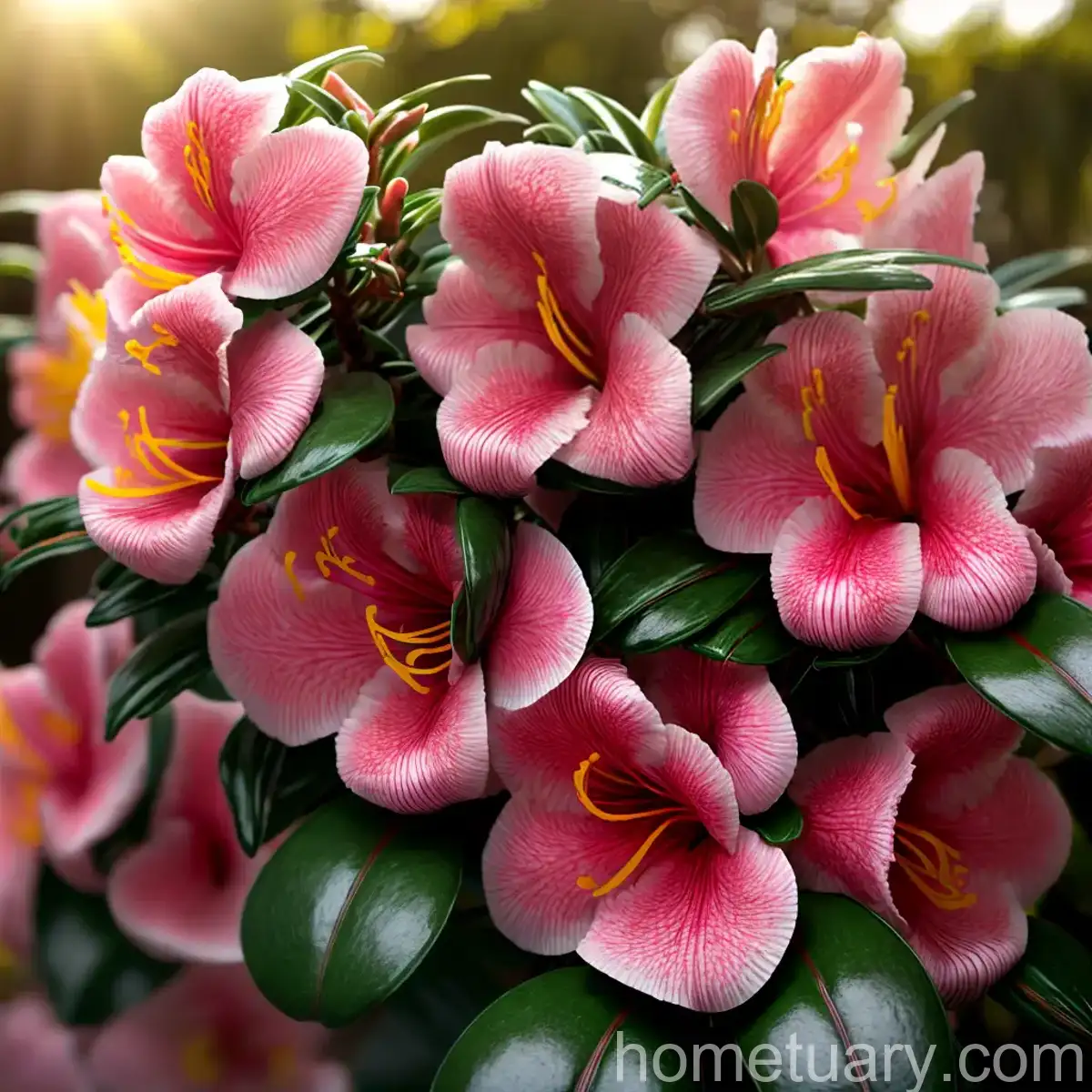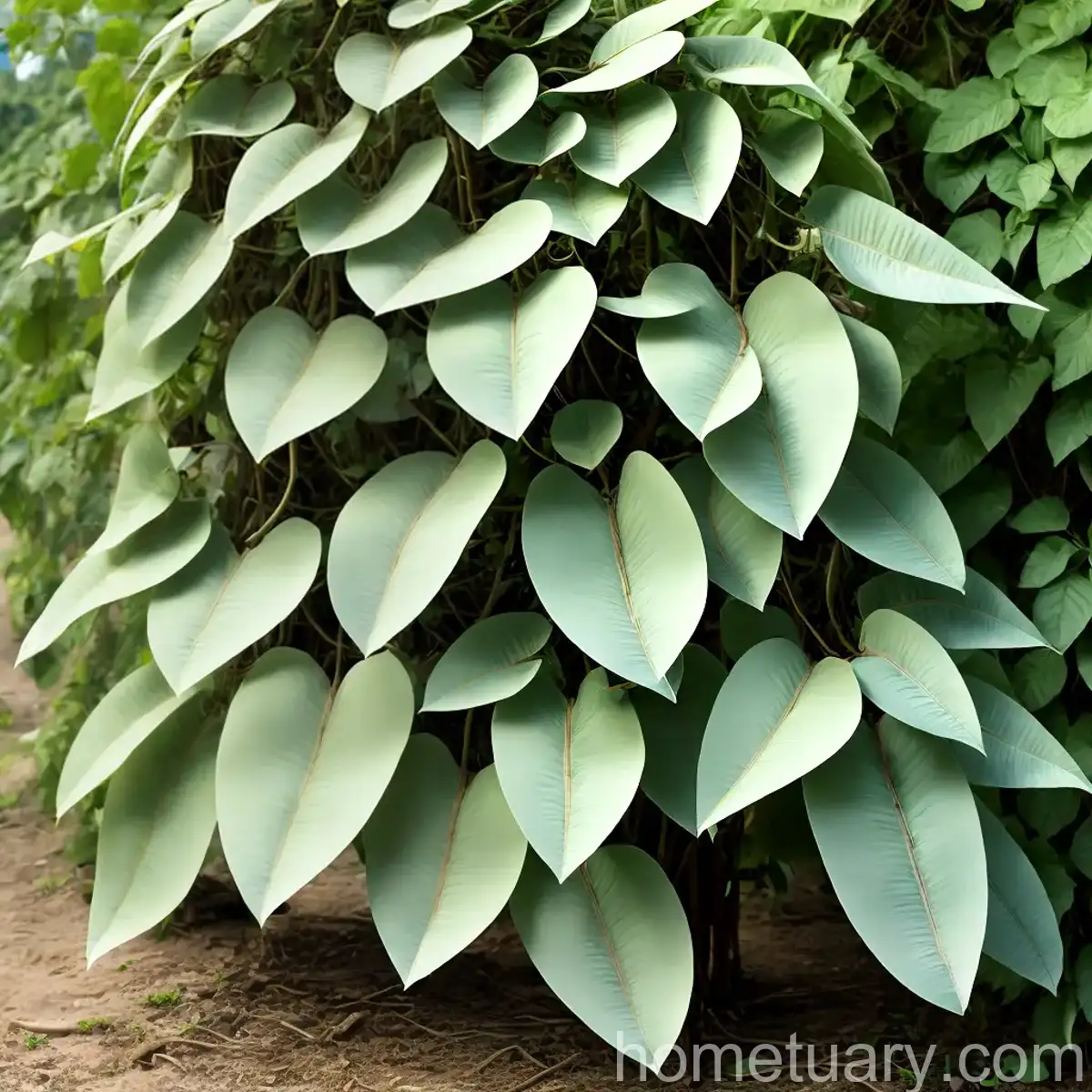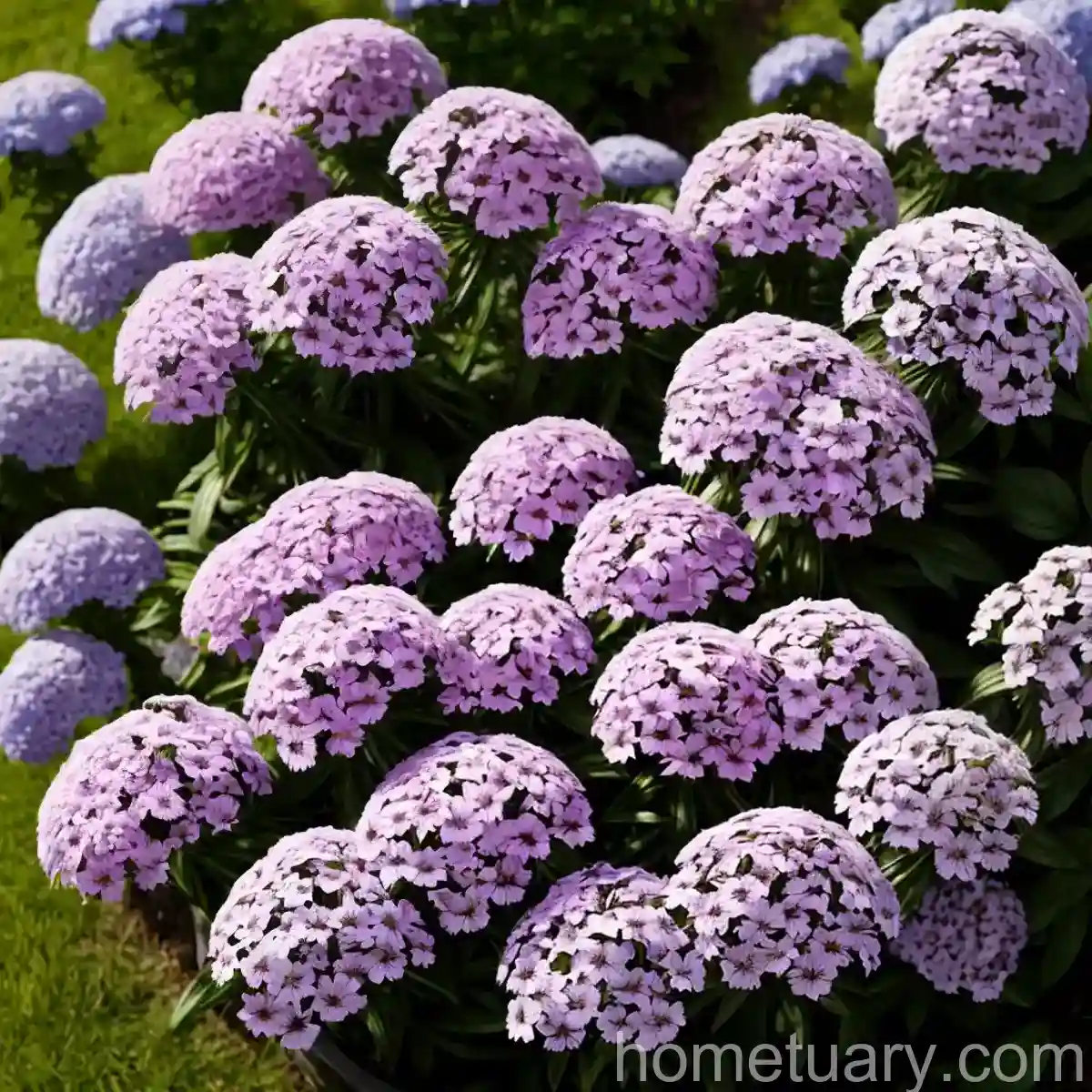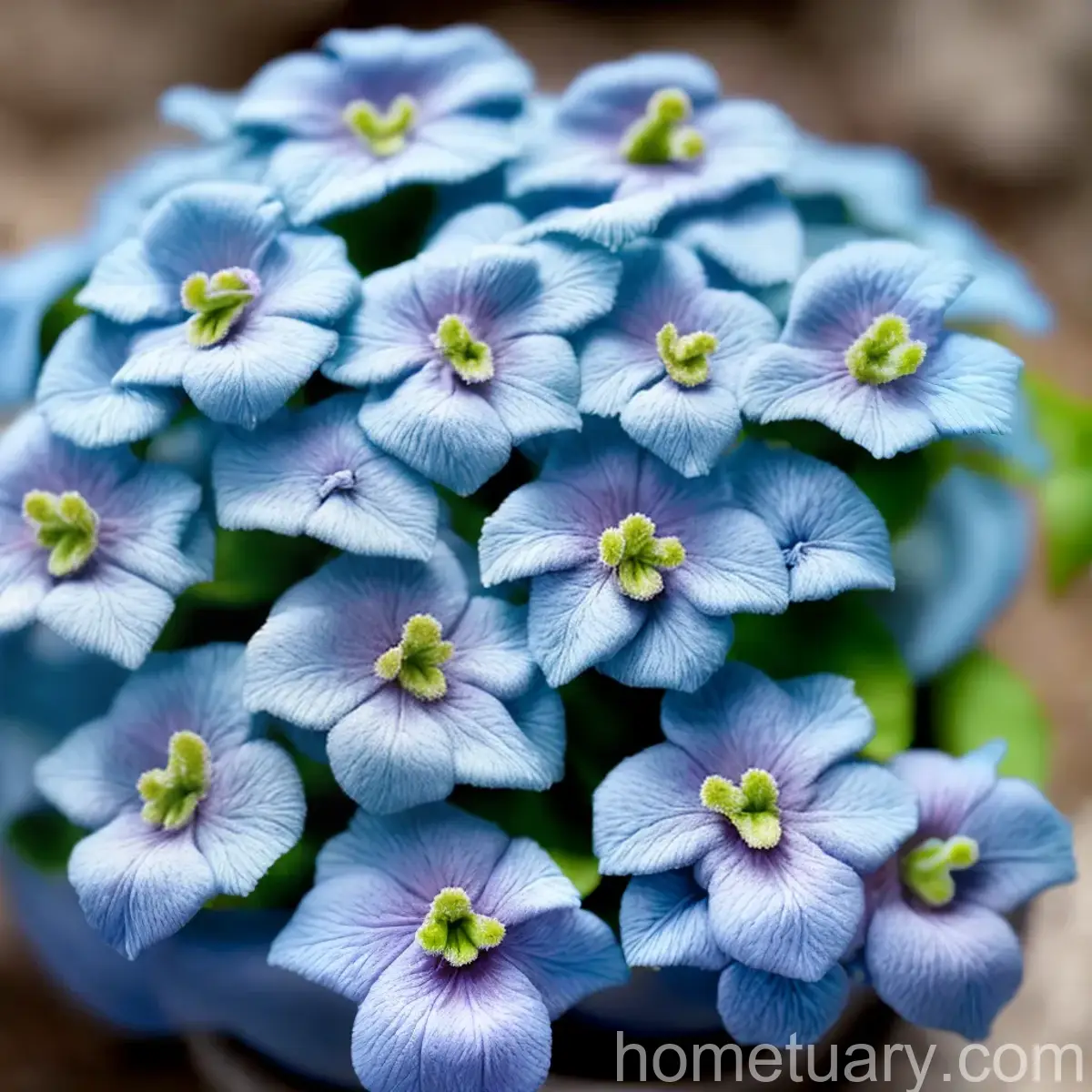Wild Sweet William (Phlox divaricata ‘Fuller’s White’): A Comprehensive Guide to Cultivation, Care, and Uses
Plants are an integral part of our natural environment, providing us with food, oxygen, and aesthetic pleasure. Among the diverse range of plant species, one that stands out for its beauty and versatility is the wild sweet William, scientifically known as Phlox divaricata ‘Fuller’s White’. This delightful perennial plant is valued for its elegant white flowers, luscious green foliage, and its ability to thrive in a variety of conditions. In this comprehensive guide, we will explore the fascinating world of wild sweet William, learning about its cultivation, care, and diverse uses.
What is Wild Sweet William (Phlox divaricata ‘Fuller’s White’)?
The wild sweet William, or Phlox divaricata ‘Fuller’s White’, is a herbaceous perennial plant that belongs to the Polemoniaceae family. It is native to North America and is renowned for its delicate, star-shaped white flowers which bloom in the spring. The plant typically grows to a height of 12-15 inches and spreads through underground rhizomes, forming attractive clusters of foliage and flowers.
Key Takeaways:
- Scientific Name: Phlox divaricata ‘Fuller’s White’
- Common Name: Wild Sweet William
- Plant Type: Herbaceous Perennial
- Flower Color: White
Culture
Cultivating wild sweet William is a rewarding experience, as it is a relatively low-maintenance plant that flourishes in the right conditions. Understanding its cultural requirements is essential for ensuring its healthy growth and abundant flowering.
Uses
- Ornamental: Wild sweet William is primarily grown for its ornamental value. Its charming white flowers make it an attractive addition to gardens, rockeries, and woodland settings.
- Pollinator Attraction: The nectar-rich blooms of Phlox divaricata ‘Fuller’s White’ attract pollinators such as bees and butterflies, contributing to the ecological balance of the garden.
Water
Wild sweet William thrives in well-draining, moist soil. Adequate watering is essential, especially during the plant’s establishment and periods of drought. However, it is important to avoid waterlogged conditions, as this can lead to root rot and other issues.
- Watering Needs: Regular, consistent watering, particularly during dry spells, is crucial for the health and vigor of the plant.
Sunlight
In terms of sunlight requirements, wild sweet William prefers partial to full shade. While it can tolerate some sun, especially in cooler climates, it generally thrives in shaded or dappled light conditions.
- Sunlight Requirements: Partial to Full Shade
Fertilizer
Providing the right nutrients is essential for promoting healthy growth and abundant flowering in wild sweet William. A balanced, slow-release fertilizer can be beneficial, particularly when applied in early spring as new growth emerges.
- Fertilizer Application: Use a balanced, slow-release fertilizer in early spring.
Soil
Wild sweet William thrives in rich, well-draining soil. Loamy, humus-rich soil with a slightly acidic to neutral pH is ideal for the plant’s growth and development.
- Ideal Soil Type: Rich, well-draining, loamy soil with a slightly acidic to neutral pH
Pruning
Pruning is an important aspect of maintaining the health and aesthetic appeal of wild sweet William. Regular deadheading of spent flowers can prolong the blooming period and encourage the production of new blooms.
- Deadheading: Remove spent flowers to promote continuous blooming.
Propagation
Wild sweet William can be propagated through division or from seeds. Division of established clumps is best done in early spring or fall, while seeds can be sown in a well-prepared seedbed and kept moist until germination occurs.
- Propagation Methods: Division, Seed Propagation
Container Popularity
While wild sweet William is commonly grown in garden beds and borders, it can also thrive in containers provided the soil and watering conditions are carefully managed.
- Container Planting: Suitable for container cultivation with proper soil and watering management.
Common Diseases
Like all plants, wild sweet William is susceptible to certain diseases. Common diseases that may affect this species include powdery mildew and fungal leaf spots.
Disease Diagnosis
- Powdery Mildew: White powdery spots on foliage
- Fungal Leaf Spots: Dark, water-soaked spots on leaves
Common Pests
Pest infestations can also impact the health and vitality of wild sweet William. Common pests to watch out for include spider mites and aphids.
- Spider Mites: Tiny pests that feed on plant sap, causing stippling and webbing on leaves.
- Aphids: Small, soft-bodied insects that suck sap from plant tissues, leading to distorted growth and yellowing of leaves.
Botanist’s Tips
To ensure the successful cultivation of wild sweet William, here are some valuable tips from experienced botanists and horticulturists:
- Plant in Well-Draining Soil: Ensure that the soil has good drainage to prevent waterlogging, which can lead to root rot.
- Monitor for Pests and Diseases: Regularly inspect the plant for signs of pests and diseases, addressing any issues promptly to prevent their spread.
- Mulch Around the Base: Applying a layer of organic mulch around the base of the plant can help conserve moisture and suppress weed growth.
Fun Facts
- The specific epithet “divaricata” refers to the plant’s spreading growth habit, while the common name “sweet William” reflects its delightful fragrance and charm.
In the following sections, we will delve deeper into specific aspects of wild sweet William’s cultivation and care, addressing the keywords provided.
Plant Name: Phlox divaricata ‘Fuller’s White’
Now, let’s explore the details related to the provided keywords and delve into the intricacies of cultivating and caring for wild sweet William.
1. Phlox divaricata ‘Fuller’s White’ Care
Caring for Phlox divaricata ‘Fuller’s White’ involves attention to specific factors such as watering, sunlight, soil, and pest management. Following the cultural guidelines mentioned earlier will contribute to the successful growth and flowering of this charming perennial plant.
2. Growing Wild Sweet William Phlox divaricata ‘Fuller’s White’
The growth of wild sweet William relies on favorable environmental conditions, including adequate water, partial to full shade, and rich, well-draining soil. Understanding its growth requirements is essential for establishing thriving plantings.
3. How to Propagate Phlox divaricata ‘Fuller’s White’
Propagation of Phlox divaricata ‘Fuller’s White’ can be achieved through division of established clumps or from seeds. Both methods require careful attention to timing and environmental conditions to ensure successful establishment.
4. Wild Sweet William Phlox divaricata ‘Fuller’s White’ Varieties
While ‘Fuller’s White’ is a popular cultivar of Phlox divaricata, there are other varieties available, each with its own unique characteristics, such as flower color, size, and growth habits.
5. Phlox divaricata ‘Fuller’s White’ Pruning Tips
Regular deadheading of spent blooms is an important pruning practice for Phlox divaricata ‘Fuller’s White’, promoting continuous flowering and preventing the formation of seed heads.
6. Wild Sweet William Perennial Plant
As a perennial plant, wild sweet William has the remarkable ability to return year after year, providing delightful blooms and enhancing the beauty of garden landscapes.
7. Phlox divaricata ‘Fuller’s White’ Watering Needs
Adequate and consistent watering is crucial for meeting the moisture requirements of Phlox divaricata ‘Fuller’s White’, especially during its active growth and flowering periods.
8. Wild Sweet William Flower Characteristics
The flowers of wild sweet William are characterized by their delicate white petals and captivating fragrance, attracting pollinators and adding a touch of elegance to garden settings.
9. Phlox divaricata ‘Fuller’s White’ Planting Guide
Following a comprehensive planting guide is essential for establishing Phlox divaricata ‘Fuller’s White’ in the garden, ensuring the correct spacing, soil preparation, and planting depth.
10. Wild Sweet William Phlox divaricata ‘Fuller’s White’ Companion Plants
Selecting suitable companion plants that complement the growth habits and aesthetic qualities of Phlox divaricata ‘Fuller’s White’ can enhance the overall visual appeal of garden beds and borders.
11. Best Soil for Phlox divaricata ‘Fuller’s White’
Rich, well-draining soil with a slightly acidic to neutral pH is optimal for the growth and development of Phlox divaricata ‘Fuller’s White’, providing the necessary nutrients and root environment.
12. Wild Sweet William Phlox divaricata ‘Fuller’s White’ Sunlight Requirements
As a shade-loving plant, Phlox divaricata ‘Fuller’s White’ thrives in partial to full shade, making it well-suited for woodland gardens, shady borders, and under tree canopies.
13. Phlox divaricata ‘Fuller’s White’ Blooming Season
The blooming season of Phlox divaricata ‘Fuller’s White’ typically occurs in the spring, gracing the garden with clusters of enchanting white flowers and their delightful fragrance.
14. Wild Sweet William Phlox divaricata ‘Fuller’s White’ Disease Resistance
While Phlox divaricata ‘Fuller’s White’ is generally resilient, it may benefit from disease prevention measures such as proper spacing, good air circulation, and avoiding overhead watering to minimize potential issues.
15. Phlox divaricata ‘Fuller’s White’ Garden Design Ideas
In garden design, Phlox divaricata ‘Fuller’s White’ can be utilized for creating charming woodland settings, shaded borders, and interplanting with other shade-loving perennials for a cohesive and picturesque display.
16. Wild Sweet William Phlox divaricata ‘Fuller’s White’ Hardiness Zone
Phlox divaricata ‘Fuller’s White’ is suited to hardiness zones 3-8, thriving in regions with cold winters and relatively mild summers.
17. Phlox divaricata ‘Fuller’s White’ Pest Control Methods
Implementing effective pest control methods such as regular inspection, natural predators, and organic treatments can help manage potential pest issues and protect the health of Phlox divaricata ‘Fuller’s White’.
18. Wild Sweet William Phlox divaricata ‘Fuller’s White’ Winter Care
Providing adequate winter care, including mulching and protection from harsh weather conditions, is essential for ensuring the survival and vitality of Phlox divaricata ‘Fuller’s White’ during the dormant season.
19. Tips for Attracting Pollinators to Phlox divaricata ‘Fuller’s White’
Creating a pollinator-friendly garden environment with a variety of nectar-rich plants can attract and support pollinators, enhancing the ecological balance and biodiversity of the garden.
20. Wild Sweet William Phlox divaricata ‘Fuller’s White’ Foliage Color
The luscious green foliage of Phlox divaricata ‘Fuller’s White’ serves as an attractive backdrop to the pristine white flowers, adding to the plant’s overall visual appeal.
21. Phlox divaricata ‘Fuller’s White’ Container Gardening
Phlox divaricata ‘Fuller’s White’ can be successfully cultivated in containers, provided they offer adequate space, well-draining soil, and proper watering and fertilization.
22. Wild Sweet William Phlox divaricata ‘Fuller’s White’ Landscape Uses
In landscape design, Phlox divaricata ‘Fuller’s White’ can be utilized as a versatile and elegant perennial, suitable for shaded gardens, woodlands, and naturalistic plantings.
23. Phlox divaricata ‘Fuller’s White’ Deer-Resistant Qualities
While no plant is entirely deer-proof, Phlox divaricata ‘Fuller’s White’ possesses some level of deer resistance, making it a suitable choice for gardens frequented by deer.
24. Wild Sweet William Phlox divaricata ‘Fuller’s White’ Soil pH Preferences
Wild sweet William prefers slightly acidic to neutral soil pH (6.0-7.0), ideally rich in organic matter and well-draining to support healthy growth.
25. Phlox divaricata ‘Fuller’s White’ Cutting Flower Tips
When selecting flowers for cutting and arranging, harvest stems with newly opened flowers and place them in water immediately to preserve their freshness and beauty.
26. Wild Sweet William Phlox divaricata ‘Fuller’s White’ Seed Starting Steps
Starting seeds of Phlox divaricata ‘Fuller’s White’ involves preparing a suitable seedbed, sowing the seeds at the correct depth, and providing consistent moisture until germination occurs.
27. Phlox divaricata ‘Fuller’s White’ Indoor Care Tips
For indoor cultivation, ensure that Phlox divaricata ‘Fuller’s White’ receives adequate light, consistent moisture, and protection from drafts and extreme temperatures.
28. Wild Sweet William Phlox divaricata ‘Fuller’s White’ Medicinal Uses
While wild sweet William is primarily grown for its ornamental value, certain traditional medicinal uses have been associated with different species of Phlox due to their phytochemical properties.
29. Phlox divaricata ‘Fuller’s White’ Fragrance Qualities
The delicate white flowers of Phlox divaricata ‘Fuller’s White’ exude a sweet and pleasant fragrance, enhancing the sensory experience of the garden.
30. Wild Sweet William Phlox divaricata ‘Fuller’s White’ Drought Tolerance
While wild sweet William prefers moist soil, established plants can exhibit some level of drought tolerance, particularly in cooler and shaded environments.
31. Phlox divaricata ‘Fuller’s White’ Foliage Shape and Texture
The foliage of Phlox divaricata ‘Fuller’s White’ is characterized by its lance-shaped leaves and overall soft, lush texture, contributing to its ornamental appeal.
32. Wild Sweet William Phlox divaricata ‘Fuller’s White’ Wildlife-Friendly Plant
The nectar-rich blooms of Phlox divaricata ‘Fuller’s White’ attract a variety of pollinators, contributing to the ecological value and wildlife-friendly nature of the plant.
33. Phlox divaricata ‘Fuller’s White’ Autumn Color Display
While the primary bloom period of Phlox divaricata ‘Fuller’s White’ occurs in spring, the foliage may exhibit varying shades of green and gold during the autumn season, adding to its seasonal interest.
34. Wild Sweet William Phlox divaricata ‘Fuller’s White’ Pollinator Garden
Creating a dedicated pollinator garden with the inclusion of Phlox divaricata ‘Fuller’s White’ can support and sustain essential pollinators, contributing to biodiversity and garden health.
35. Phlox divaricata ‘Fuller’s White’ Groundcover Uses
In suitable conditions, Phlox divaricata ‘Fuller’s White’ can function as an attractive and low-growing groundcover, providing a carpet of delicate flowers and foliage.
36. Wild Sweet William Phlox divaricata ‘Fuller’s White’ Spring Maintenance
Spring maintenance for Phlox divaricata ‘Fuller’s White’ includes removing any winter debris, applying a layer of mulch, and inspecting for new growth and potential issues.
37. Phlox divaricata ‘Fuller’s White’ Historical Significance
While not as widely documented as some other species, Phlox divaricata has held cultural and historical significance among certain Native American tribes and early settlers.
38. Wild Sweet William Phlox divaricata ‘Fuller’s White’ Shade Gardening
As a shade-loving plant, Phlox divaricata ‘Fuller’s White’ is an excellent choice for shaded gardens, adding splashes of white and lush greenery to these environments.
39. Phlox divaricata ‘Fuller’s White’ Vertical Garden Ideas
While not typically cultivated in vertical gardens, Phlox divaricata ‘Fuller’s White’ could be utilized in suitable vertical structures with appropriate soil and moisture retention.
40. Wild Sweet William Phlox divaricata ‘Fuller’s White’ Soil Drainage Requirements
The soil around the root zone of Phlox divaricata ‘Fuller’s White’ should be well-draining, avoiding waterlogged conditions that can lead to root issues and disease.
41. Phlox divaricata ‘Fuller’s White’ Bird-Friendly Qualities
The presence of pollinators attracted to the blooms of Phlox divaricata ‘Fuller’s White’ can also support bird species that feed on nectar and insects, contributing to the ecological balance.
42. Wild Sweet William Phlox divaricata ‘Fuller’s White’ Hedge Plant
While not commonly used as a formal hedge plant, its spreading growth habit and charming flowers could be incorporated into informal or naturalistic hedge designs.
43. Phlox divaricata ‘Fuller’s White’ Companion for Other Perennials
When selecting companion plants, consider shade-loving perennials such as hostas, ferns, and tiarellas that share similar environmental preferences with Phlox divaricata ‘Fuller’s White’.
44. Wild Sweet William Phlox divaricata ‘Fuller’s White’ Unique Floral Structure
The unique star-shaped flowers of Phlox divaricata ‘Fuller’s White’ contribute to its aesthetic appeal, creating striking arrangements when in bloom.
45. Phlox divaricata ‘Fuller’s White’ Summer Blooms
While the primary blooming period occurs in spring, with proper care and favorable conditions, Phlox divaricata ‘Fuller’s White’ may also produce sporadic blooms during the summer months.
46. Wild Sweet William Phlox divaricata ‘Fuller’s White’ Border Plant
As a charming and relatively low-growing perennial, Phlox divaricata ‘Fuller’s White’ can function as an appealing border plant, adding a touch of elegance to garden edges and pathways.
47. Phlox divaricata ‘Fuller’s White’ Edging Plant Ideas
Utilize Phlox divaricata ‘Fuller’s White’ as an edging plant to delineate garden beds and pathways, showcasing its captivating blooms and attractive foliage.
48. Wild Sweet William Phlox divaricata ‘Fuller’s White’ Native Habitat
The native habitat of Phlox divaricata spans woodland areas and shaded locations in North America, illustrating its natural adaptation to partial to full shade environments.
49. Phlox divaricata ‘Fuller’s White’ Low-Maintenance Plant
In general, Phlox divaricata ‘Fuller’s White’ is regarded as a

